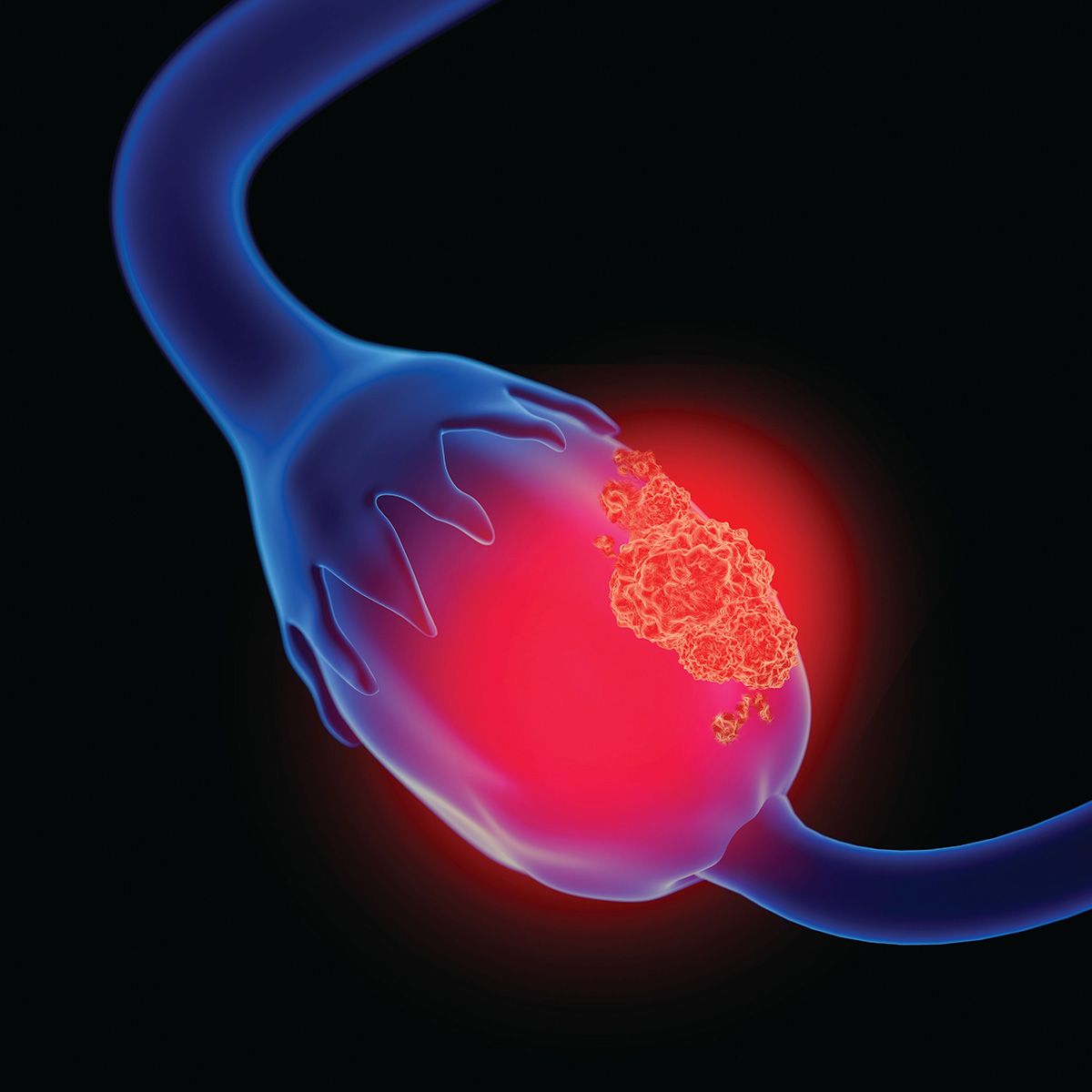Article
A Promising New Agent for Epithelial Ovarian Cancer
Author(s):
A new agent showed a favorable toxicity profile for patients with epithelial ovarian cancer. The drug, mirvetuximab soravtansine (IMGN853), also demonstrated encouraging clinical activity in a phase 1 trial presented at the 2017 American Society of Clinical Oncology (ASCO) Annual Meeting.
Kathleen N. Moore, MD
A new agent showed a favorable toxicity profile for patients with epithelial ovarian cancer. The drug, mirvetuximab soravtansine (IMGN853), also demonstrated encouraging clinical activity in a phase 1 trial presented at the 2017 American Society of Clinical Oncology (ASCO) Annual Meeting.
There were 113 patients with epithelial ovarian cancer in the pooled analysis, including a cohort of 36 patients who met the inclusion criteria for the ongoing, randomized phase 3 FORWARD I trial (NCT02631876) comparing mirvetuximab soravtansine to investigator’s choice of chemotherapy. The criteria include moderate-to-high folate receptor alpha (FRα) expression and one to three prior lines of therapy.
The safety profile for the overall pooled population was consistent with previously reported data, with the most common adverse events including diarrhea, fatigue, nausea and blurred vision; however, these were low grade and well-managed.
In all pooled patients from the phase 1 analysis, the confirmed overall response rate (ORR) was 30 percent, and included three complete responses and 31 partial responses. The confirmed ORR was 47 percent in the group eligible for FORWARD I, including one complete response and 16 partial responses.
Can you provide an overview of the analysis?
In an interview with CURE at ASCO, lead study author Kathleen Moore, M.D., assistant professor in the section of gynecologic oncology and director of the Oklahoma TSET Phase 1 Clinical Trials Program at the University of Oklahoma Health Sciences Center, discussed the potential of mirvetuximab soravtansine in patients with epithelial ovarian cancer.Mirvetuximab soravtansine is the first antibody-drug conjugate in a pivotal phase 3 trial for patients with ovarian cancer. The abstract that I presented was a pooled analysis of the phase I expansion cohorts. There are three expansion cohorts.
We did a pooled analysis, which looked at all of the patients and then we specifically looked at the patients who met eligibility for our open phase 3 trial. The analysis of the response rate and the PFS that were reported in the first expansion cohort informed the design of the phase 3 study. We wanted to show consistency of those findings with a larger data set.
Can you give some background into the mechanism of action of mirvetuximab and then provide an overview of the phase 3 trial design?
This analysis was done to show that the high response rate in the patient population we identified was real and justifies the design of the ongoing [phase 3] trial.I describe antibody-drug conjugates to patients as arrows or bombs. The head of the arrow is targeted to something that is ideally tumor specific, such as a receptor or protein that is only present on the tumor in order to know the expression on normal tissue.
The stem of the arrow is what is called a linker. Linkers are elegantly designed structures that hold the head of the arrow to the tail of the arrow. The tail of the arrow is conjugated with highly potent molecules of chemotherapy. In the case of mirvetuximab, this is a drug called DM4, which is a microtubule toxin. It's an inactive drug, so the linker is important because it needs to keep the entire molecule together until it hits its target.
In the case of mirvetuximab, the target is FRα, which is widely overexpressed on high-grade epithelial ovarian cancer. However, 80 percent of cases overexpress this and about 60 percent to 65 percent have moderate-to-high expression, which is what we’re looking for in the phase 3 trial. Once it binds, it’s like a Trojan horse. The cell thinks it’s a friend through endocytosis, then it’s led into the cell and the linker releases the molecules of chemotherapy. If the cell is sensitive to DM4, the cell will die. You will get apoptosis and the molecules can diffuse into surrounding cells. You get two chances to kill the cell you’ve landed on and some surrounding cells.
In the phase 1 trial, during the dose expansion in platinum-resistant patients, we had response rates of over 40 percent in the group of patients who had one to three prior lines of chemotherapy and moderate-to-high expression of FRα. If you look at single-agent cytotoxic therapy as a comparison, the response rate is in the 15 percent range, making it a significantly higher response rate than we normally see.
The median PFS was almost seven months, which is also significant compared with single-agent cytotoxic therapy that normally has a median PFS of around four months. That was the signal that was seen in the first expansion cohort and was very consistent. We have a 47 percent response rate and a 6.7-month median PFS in the pooled cohort.
If these phase 3 findings are positive, how could this agent transform the treatment landscape for ovarian cancer?
The ongoing phase 3 FORWARD I trial is just launching. We have about 24 patients enrolled and 40 sites that are activated and in the process of starting up. It’s a randomized phase 3 trial for patients who have platinum-resistant ovarian cancer, one to three prior lines of therapy, measurable disease, and an immunohistochemistry central test. Patients must have moderate-to-high expression of FRα, so there is a tissue screening test to come on trial. Antibody-drug conjugates are targeted chemotherapy…[Ovarian cancer is] a terrible disease, but cytotoxic therapy does work and can extend a patient’s lifespan with several therapies. However, those therapies have side effects and with microtubule toxins, taxanes, docetaxel, Abraxane and paclitaxel, which are used again and again, a patient experiences cumulative neuropathy, hair loss (depending on which taxane), and other toxicities, as well.
The point of the study was to show that mirvetuximab is superior to physician’s choice. One of those choice therapies is weekly paclitaxel, which is one of our favorite drugs in the setting.
I believe that mirvetuximab is superior. It also has a better toxicity profile in a lot of ways. It has [no] bone marrow toxicities, so patients have a break from that standpoint. They don’t lose their hair and there is far less neurotoxicity, as well. The side effect profile is different and not overlapping with other cytotoxic therapies—allowing it to fit in nicely.
In this space, the competitor implied the standard of care is chemotherapy plus Avastin (bevacizumab) and that regimen is defined by a trial called the AURIELA trial. With the addition of Avastin, there were improvements in response rates and PFS. That will remain a standard of care since Avastin is an effective drug. This will be a question of sequencing. It's not like people must get 1 or the other. If it’s approved, they’re going to get both.
Is there anything else you would like to add?
Patients have a lot of neuropathy or other contrary indications to paclitaxel which was probably our favorite arm on AURIELA. If you have a lot of neurotoxicity issues, maybe you’re going to pick this drug first. It is in the set of options for patients who stop responding to platinum and need an effective therapy.It’s an exciting time for ovarian cancer and, hopefully, this will bleed over into other gynecologic cancers. We have three new indications with PARP inhibitors in different settings and that’s wonderful for those patients who have a molecular signature where they will benefit. There is a lot of interest in these drug conjugates with a variety of payloads and targets in ovarian cancer.
There is a lot of early-drug development going on in this space and, of course, not all of them will mature and move on like mirvetuximab has. Cytotoxic therapy is an effective therapy in ovarian cancer without a lot of the systemic side effects. This class of agents is exciting and I am glad that we figured out that the ovary is a good spot for them to land. Hopefully, we’ll have more than one in the future but, first, we need to get this approved.



